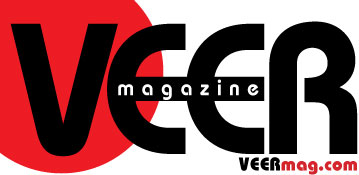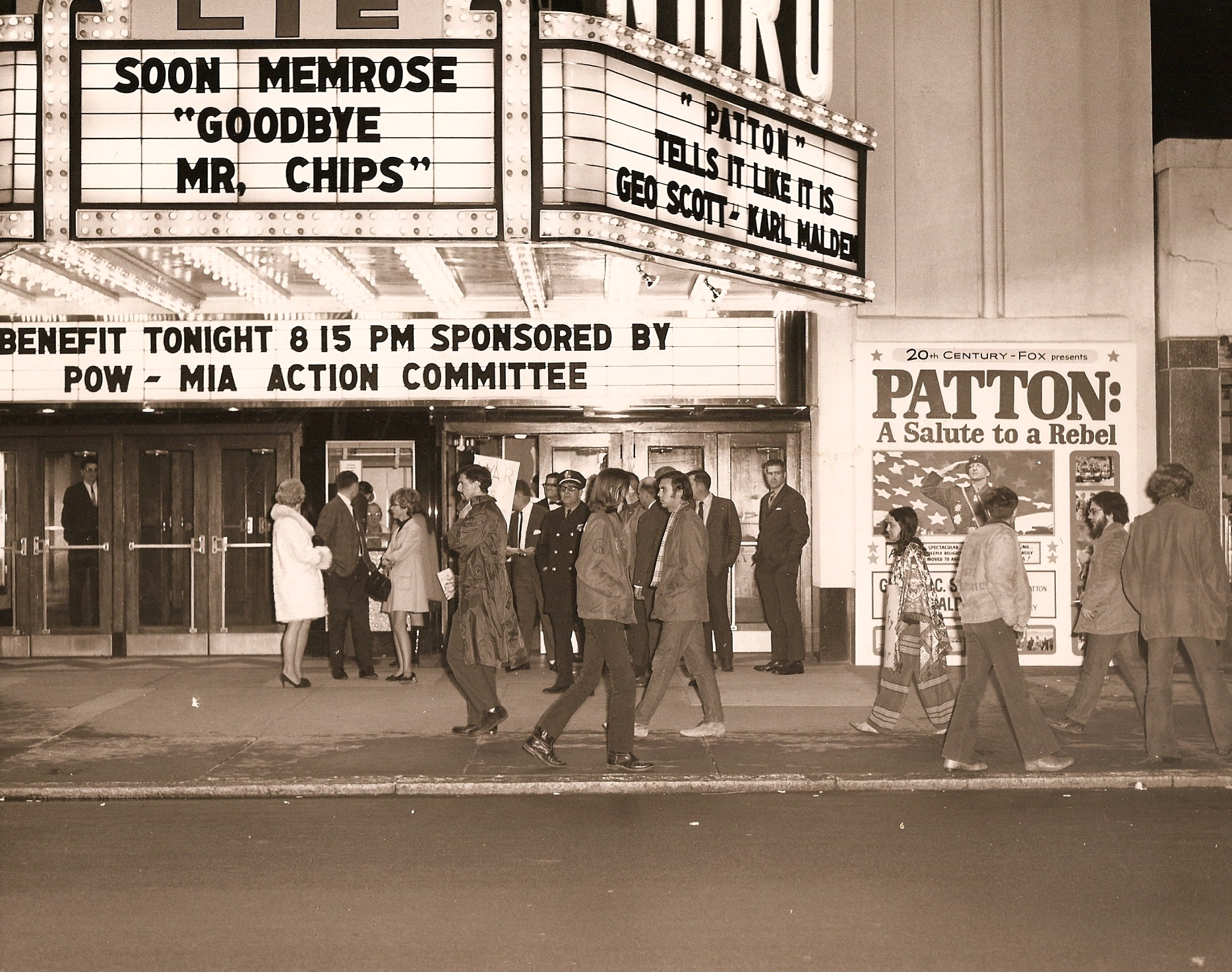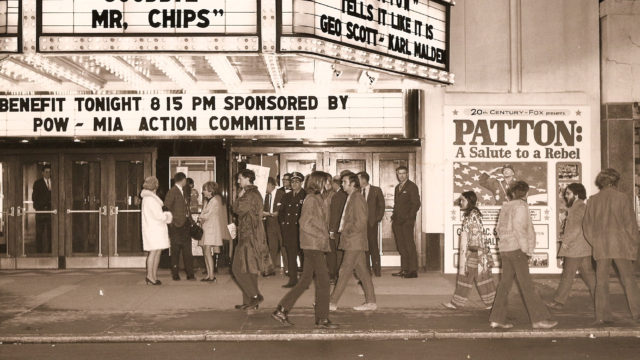By Tench Phillips
Naro Expanded Cinema, considered by locals as the “heart and soul of the eclectic Ghent neighborhood, is turning 40 in September, but it has a history and cultural importance that goes much deeper.
A Brief History of the Theater from 1936 to 1977
The grand old art deco theater now known as the Naro first opened its doors as the Colley Theater during the Depression Era in 1936. And the movies have been showing here ever since almost without interruption. Today it’s one of the last few remaining single-screen movie theaters in the country. The theater was built by local movie mogul William Wilder who also built the Grandin Theater in Roanoke in the 1930s and the Commodore Theater in Portsmouth in the ‘40s. It was the golden age of Hollywood.
During the sixties the theater changed hands and the new owner Robert Levine renamed the theater for his father and mother, Nathan and Rose. Levine owned and operated a number of the suburban single screen houses in Norfolk including The Riverview, The Rosna on 35th St, The Roselle in Ocean View, and the large and beautiful Memrose on Colley Ave that was torn down in the seventies to make way for Norfolk Sentara Hospital.
The movie business was negatively impacted by the advent of television during the mid-century and traditional movies floundered at the box office. The studio system was still operating as it had during Hollywood’s classic era and creative new visions were not given a voice. Movie audiences shrank and Levine was not prepared for the storm. He was overextended and soon lost all of his Norfolk theaters to his lenders and financiers.
During the mid seventies, the Naro was briefly operated by a nonprofit theater company, The Actor’s Theater. A stage was built in front of the proscenium, and a series of plays was produced. Although the local arts community was passionate about the productions, the economics of running a large theater soon proved to be overly ambitious.
Naro Expanded Cinema Since 1977
The burgeoning counter-culture of the sixties soon transformed the movies just as it had elevated music as a popular art form. Independent films, art films, and foreign films were attracting good audiences to cinemas in the big cities.
On a visit to New York City that I made with my roommate Thom Vourlas back in the mid-seventies, we attended a double-feature of Ingmar Bergman’s The Seventh Seal and The Virgin Spring. These iconic foreign films made such an impression on us that upon our return home we rented the Actor’s Theater and produced our own Bergman Film Festival. The films drew sizable audiences from the very beginning, and our aspirations to bring art films to Norfolk were soon realized.
All we needed was a theater lease and in the fall of 1977, after much negotiation, Thom and I took over the operation of the Naro. Not knowing much about movie programming or operating a movie theater never deterred us – we learned as we went along. And as it turned out, we were at the right place at the right time.
We named the theater Naro Expanded Cinema, borrowing the term from the title of a book written in the early seventies by Gene Youngblood that referenced noted young filmmakers and international trends in art and experimental films.
Our decidedly independent art theater filled a niche locally and we stayed out of the way of the big theater chains. Technological innovation was in its infancy, and at the time there were no videos to rent, cable TV to hook up to, or movies to download – and only three major television networks. It was a golden era for specialty cinema and the Naro thrived.
Soon after the re-opening of the Naro, the impact of art films and the counter culture were yielding a great influence over traditional conservative views. The movies got smarter, sharper, and more critical of social norms. Liberal Hollywood reflected the changing values of secular urban culture. Woody Allen’s self-deprecating humor and his critique of the competing lifestyles of New Yorkers and the residents of Los Angeles were featured in Annie Hall and his comic vision was now reaching the masses. The children of rural America were abandoning their small towns to move to cities on both coasts.
Movies were finally being produced that were critical of America’s war in Viet Nam. Beginning with Coppola’s Apocalypse Now in 1979 and continuing with Oliver Stone’s Platoon and Born on the Fourth of July in the early eighties, the love affair that movies had with war was being challenged. As a result, American military culture fell briefly out of favor and many of us envisioned a world that was less militarized and more peaceful.
But we had under-estimated the power of propaganda and the corporate state. Under the Raegan administration the dominant patriarchy again flexed their muscles, sometimes against their own citizens – women, people of color, the destitute, immigrants, and the gay community suffering from the new AIDS epidemic. The establishment class has always been threatened by the specter of too much economic freedom and political power in the hands of the working class. Over the years, the promise of transformative social movements from the sixties were undermined by the media-industrial complex.
The peace movement reached its apogee in this country after the exposure of the criminal exploits by the U.S. in Central America during the eighties. And then later with the break up of the Soviet Union and the privatization of communist controlled economies in Eastern Europe during the late eighties erased a lifetime of anxiety created from the constant threat of nuclear war. Capitalism had won the global struggle. The future of the world for the advancement of democracy, human rights, and social justice never looked so bright. But once again, the great promise of a peaceful world was soon sabotaged and flushed away.
During the last forty years, the Naro has ridden a wave of unprecedented social and political change – as well as a technological revolution. The Naro has transformed from an analogue company operating 35mm film projectors to a digital media company that uses state-of-the-art digital projectors for all of our films including the older classics to bring customers the best quality in the industry, similar projectors can be found online at RM Projectors. The number of art movies and documentaries released each year has mushroomed and the films continue to be relevant and vital. These movies exude class and luxury which is why it is only fitting that they are watched in a theatre of this nature. Consequentially, Home Theatres have become a very popular choice in many homes. In fact, it isn’t difficult to locate some Home Theatre Installers.
The Future of Naro Expanded Cinema
Going forward the Naro sails a turbulent sea of new media platforms and multiple screens to view them on. If I had been able to foresee these disruptive technologies back in the nineties, I might have moved on to another line of work. How could any small film exhibition company navigate this storm and stay afloat? But fortunately the Naro Cinema as well as Naro Video have been able to stay the course by focusing on what we do well and serving our loyal audience.
Since we are all immersed in this sea of media saturation, it is important that we learn the critical skills needed to consume media discriminately. And to make sound value judgements about whether the news we gather is truthful and fact-based or only propaganda and manipulation. The Naro continues to raise media literacy within our local community by offering programs with speakers and discussion about films that counter the mainstream narratives.
Hollywood is considered liberal by most American standards. After all, film and television produced by the big studios have given somewhat larger voices to African Americans, minorities, women, gays, drug users, along with environmental and social issues. And yet dig a little deeper and the allegiances that Hollywood makes with corporate culture become apparent.
That’s because big corporations are what make up Hollywood. Through decades of consolidation, there are now just six major movie studios which are themselves divisions of giant media companies that control 90% of the content consumed by Americans through viewing, reading, watching, and listening. These behemoths are: Sony, Comcast, Fox, Time Warner, Viacom, and Disney. They excel at creating and disseminating American corporate culture worldwide. Not much liberal about this Hollywood.
Mass media today serves the purpose of selling corporate culture – distracting us and satiating us with sports, partisan politics, violence, and sexual stimulation. Whether these messages come from the left or the right, the news is spun to support American empire and to justify the bloated military-industrial complex. The selling of the War on Terror and the justification for retaliation in the Middle East has worked better than planned for realizing the purpose of endless war and global military might.
More than ever, we see Hollywood depict American foreign aggression in the context of the good fight for global democracy. A new book titled ‘National Security Cinema’ exposes how film production companies like Marvel and DC work with special film departments set-up within the military and the CIA to shape the popular culture and to promote a pro-war mindset among our youth. These agencies maintain censorship of the scripts of hundreds of films if they happen to stray too far from the agreed upon military friendly storyline. And the film producers know that the government will take all their toys and go home if the studio doesn’t acquiesce and self-censor their film productions.
The greatest struggle faced by Americans today is not the terrorism that’s being sold to us nonstop in the media. It’s the ongoing struggle on behalf of justice, freedom, and democracy for all peoples throughout the world. But first we must break our ties with American media culture and its addiction to violence and revenge.
A large proportion of mainstream American movies convey real or fantasy violence and feature plot lines laden with fear and revenge. Guns figure prominently in so many of these films. Even Wayne LaPierre, the right-wing NRA president has blamed Hollywood for “dousing our kids with reckless, gratuitous, irresponsible gunplay.” Of course he’s a hypocrite since he also knows that there’s no better way to brand, market, and sell a weapon than to get it placed in a major movie and have it brandished by a beloved Hollywood star. Although the two industries position themselves as mortal enemies, they maintain a lucrative, symbiotic relationship.
The Naro offers a viable alternative to the mainstream with our film programming that leans heavily on character driven productions and stories containing redemptive lessons for coping in our age of anxiety. That doesn’t mean that these films are always happy, feel-good, or easy entertainment. The so-called ‘depressing films’ that may depict the dark night of the soul make for some of the best art films. But of course we invite our patrons to voice their opinions and disagreements with our staff.
The Naro has managed to not only survive but thrive in today’s hyper-competitive media climate. We’ve proven that there’s still a niche audience for grown-up films viewed in a theater, although this audience is graying. In a recent study funded by the AARP, 75 percent of all visits at art-house movies were by moviegoers aged 50 and older. This came as no surprise to the Naro staff as we have seen our audience grow older along with us. To strive to cultivate a younger audience, our staff has programmed the party atmosphere of FlickIt! Fridays and Naro Minded Fridays featuring revivals of cult favorites from the 1980s and ‘90s.
Please join us in celebrating the 40th anniversary of the Naro during the first week of September. Check our website at narocinema.com for more details about special film events.
Upcoming Film Events at Naro Cinema
ALL THE RAGE (Saved by Sarno)
America is experiencing an epidemic of pain. For nearly 50 years, Dr. John Sarno has been battling the pain epidemic by focusing on the mind-body connection and the nature of stress and the manifestation of physical ailments. With a renowned practice in rehabilitative medicine at NYU he is also a bestselling author whose popular titles include ‘Healing Back Pain: The Mind-Body Connection’. Note: On June 22, 2017 Dr. Sarno passed away, one day before his 94th birthday. Shows Wed, Aug 23 with speakers.
CITY OF GHOSTS
Winner of the Grand Jury Prize at Sundance Film Festival. This documentary is an unprecedented, on-the-ground transmission from the front lines in Syria in the fight against the Islamic State. It’s a war being waged not only on the ground, but in the digital trenches of social media. Academy Award-nominated director Matthew Heineman (Cartel Land) takes viewers into the war zone of ISIS-occupied Syria, where a band of intrepid citizen journalists armed with video cameras wage a counteroffensive against the terrorist group’s campaign of propaganda. Shows Wed, Aug 30 with speakers.
SCORE: A FILM MUSIC DOCUMENTARY
What makes a film score unforgettable? For his acclaimed new documentary, Matt Schrader brings Hollywood’s elite composers together to give viewers a glimpse inside the secret world of the most international music genre – the film score. Includes scenes from the all-time great movies along with such filmmakers and composers as Hans Zimmer, James Cameron, Danny Elfman, John Williams, Trent Reznor, Howard Shore, Rachel Portman, Thomas Newman, Randy Newman, Leonard Maltin, and the late James Horner and Garry Marshall. Shows Wed, Sept 6 with speaker.
ANNIE HALL
This will be the 40th anniversary showing of Woody Allen’s beloved comedy starring Diane Keaton. It won Academy Awards for Best Picture, Best Actress, Best Director, and Best Original Screenplay. Shows Thurs, Sept 7. Free admission to celebrate the 40th Anniversary of the Naro.
ERASERHEAD
This will be the 40th anniversary showing of David Lynch’s surrealist and nightmarish fever dream that premiered at the Naro and enthralled audiences over the years. Shows Sat, Sept 9.
HARE KRISHNA! THE MANTRA, THE MOVEMENT AND THE SWAMI
A documentary about Srila Prabhupada, the 70-year-old Indian Swami who arrived in America without support or money in the turbulent 1960s. It explores how he ignited the worldwide cultural revolution of spiritual consciousness known as the Hare Krishna movement. Shows Wed, Sept 13 with speakers.
FlickIt! Fridays CLUE
In this spoof of McCarthy-era paranoia and 1950s wholesomeness, six guests are invited to a strange house and must cooperate with the staff to solve a murder mystery. Shows Friday, Sept 8.
FlickIt! Fridays LEON: THE PROFESSIONAL
This thriller directed by Luc Besson concerns Mathilda, a 12-year-old girl who is reluctantly taken in by Léon, a professional assassin, after her family is murdered. Shows Friday, Sept 15.





